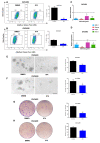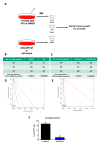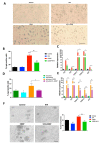A Novel ALDH1A1 Inhibitor Blocks Platinum-Induced Senescence and Stemness in Ovarian Cancer
- PMID: 35884498
- PMCID: PMC9318275
- DOI: 10.3390/cancers14143437
A Novel ALDH1A1 Inhibitor Blocks Platinum-Induced Senescence and Stemness in Ovarian Cancer
Abstract
Ovarian cancer is a deadly disease attributed to late-stage detection as well as recurrence and the development of chemoresistance. Ovarian cancer stem cells (OCSCs) are hypothesized to be largely responsible for the emergence of chemoresistant tumors. Although chemotherapy may initially succeed at decreasing the size and number of tumors, it leaves behind residual malignant OCSCs. In this study, we demonstrate that aldehyde dehydrogenase 1A1 (ALDH1A1) is essential for the survival of OCSCs. We identified a first-in-class ALDH1A1 inhibitor, compound 974, and used 974 as a tool to decipher the mechanism of stemness regulation by ALDH1A1. The treatment of OCSCs with 974 significantly inhibited ALDH activity, the expression of stemness genes, and spheroid and colony formation. An in vivo limiting dilution assay demonstrated that 974 significantly inhibited CSC frequency. A transcriptomic sequencing of cells treated with 974 revealed a significant downregulation of genes related to stemness and chemoresistance as well as senescence and the senescence-associated secretory phenotype (SASP). We confirmed that 974 inhibited the senescence and stemness induced by platinum-based chemotherapy in functional assays. Overall, these data establish that ALDH1A1 is essential for OCSC survival and that ALDH1A1 inhibition suppresses chemotherapy-induced senescence and stemness. Targeting ALDH1A1 using small-molecule inhibitors in combination with chemotherapy therefore presents a promising strategy to prevent ovarian cancer recurrence and has the potential for clinical translation.
Keywords: ALDH1A1; cancer stem cells; chemotherapy resistance; ovarian cancer; senescence.
Conflict of interest statement
The authors declare no conflict of interest.
Figures





References
Grants and funding
LinkOut - more resources
Full Text Sources
Molecular Biology Databases
Miscellaneous

